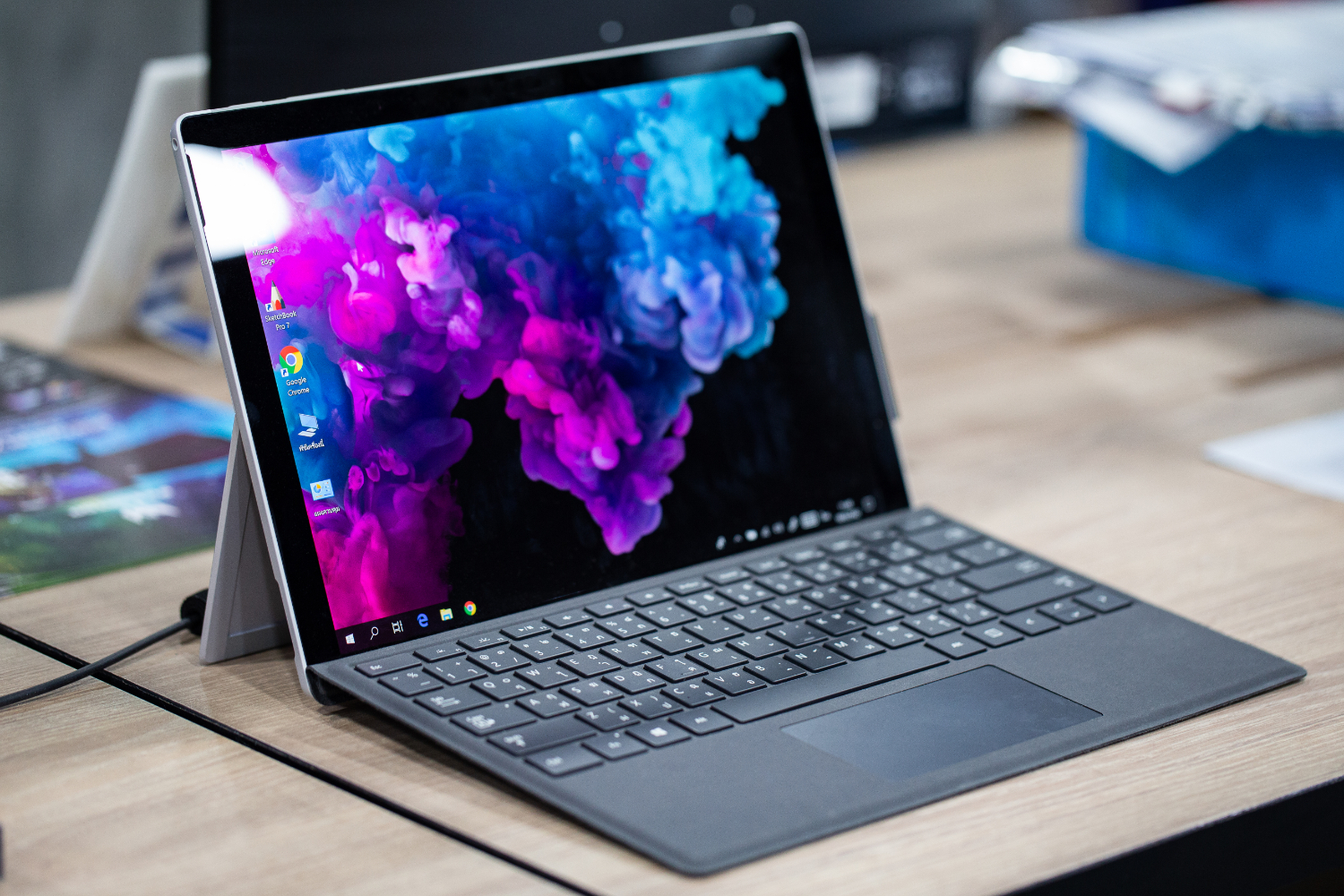AMD, Qualcomm Chips Could Land in Future Surface PCs

Intel might lose its exclusivity over another market. Petri reported yesterday that Microsoft has developed prototype Surface tablets and laptops that feature processors from AMD or Qualcomm rather than Intel.
According to the report, Microsoft has developed a Surface Laptop that was built around an AMD Picasso accelerated processing unit (APU). AMD announced those processors with integrated graphics in January, but so far most of the information about them has come via leaks of varying trustworthiness, such as AsRock sharing the specs for eight unannounced APUs in a processor support list database on Tuesday.
Picasso is believed to use the new Zen+ CPU microarchitecture, as well as the existing Vega graphics microarchitecture. Combine that with GlobalFoundries manufacturing these Picasso offerings with the 12nm node--rather than the 14nm manufacturing process used to make Raven Ridge processors--and the lineup should offer enough improvements to tide AMD customers over until the 7nm Renoir APUs debut.
The other prototype revealed in Petri's report was a Surface Pro featuring an Arm-based processor. Microsoft reportedly collaborated with Qualcomm on a custom system-on-chip (SoC) called Excalibur that was designed specifically for better compatibility with Windows. That's probably a good thing, because previous attempts to bring Windows 10 to non-x86 processors have been less-than-stellar, to say the least.
Intel's been the only processor supplier for Surface products for several years now. But if these Surface prototypes become official products, this could be yet another product lineup the company no longer has to itself. Chromebooks have started to use AMD processors, as have Windows laptops from various manufacturers and Apple reportedly plans to switch its Mac lineup to an Arm-based processor by 2020.
Now would be the right time for Microsoft to consider using other processors in Surface products. Intel has faced a long CPU shortage, other companies have proved that non-Intel processors can be up to snuff and Microsoft itself has reportedly sought to diversify the Surface lineup with dual-screen devices. Why not see if those products can use the likes of Picasso or Excalibur instead of Intel's next chip?
Get Tom's Hardware's best news and in-depth reviews, straight to your inbox.

Nathaniel Mott is a freelance news and features writer for Tom's Hardware US, covering breaking news, security, and the silliest aspects of the tech industry.
-
MasterMadBones AMD Picasso is already out and available in consumer laptops. I own an HP laptop with a Ryzen 5 3500U. There are no rumors about what a Picasso die is made of because we already know all of that. The only question that remains is what the product stack for the desktop will look like.Reply